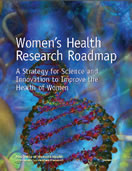Spotlight
Letter from Dr. Stephen Katz: Building Bridges to Enhance Patient Care: The NIAMS Intramural Research Program
Dear Colleagues,
The NIAMS Intramural Research Program (IRP), and the entire intramural program at the National Institutes of Health (NIH), offer unique resources in the biomedical research enterprise. The long-term, high-risk, high-reward focus of the IRP allows researchers to stretch the boundaries of innovation. They are able to build bridges across the traditional silos that tend to separate organizations, patients and scientists, and research results and clinical practice. These collaborations make an enormous difference for all Americans.
Image: Stephen I. Katz, M.D., Ph.D.
News
Muscular Dystrophy Coordinating Committee Updates Action Plan
The Muscular Dystrophy Coordinating Committee coordinates activities across the NIH and with other federal health programs and activities relating to the various forms of muscular dystrophy. With input from the public and the scientific community, the committee developed the 2015 Action Plan for the Muscular Dystrophies [PDF – 707 KB], which outlines the priority needs to improve treatments and reduce the disease burden for all types of muscular dystrophies. It is intended to be a blueprint for the entire muscular dystrophy community. The Wellstone Muscular Dystrophy Research Network website, which provides information about the NIH’s Centers of Excellence program in muscular dystrophy research, has also been updated.
NIH Genome Sequencing Program Targets the Genomic Bases of Common, Rare Disease
The NIH will fund a set of genome sequencing and analysis centers whose research will focus on understanding the genomic bases of common and rare human diseases. The National Human Genome Research Institute (NHGRI) launched the Centers for Common Disease Genomics, which will use genome sequencing to explore the genomic contributions to common diseases such as heart disease, diabetes, stroke and autism. NHGRI also announced the next phase of a complementary program, the Centers for Mendelian Genomics, which will continue investigating the genomic underpinnings of rare, typically inherited diseases, such as cystic fibrosis and muscular dystrophy.
New NIH Awards Will Support Development of Therapeutic Alternatives to Traditional Antibiotics
The National Institute of Allergy and Infectious Diseases (NIAID), part of the NIH, has awarded approximately $5 million in funding for 24 research projects seeking to develop nontraditional therapeutics for bacterial infections to help address the growing health threat of antibiotic resistance. Advancing new therapeutic options to combat drug-resistant bacteria is a key goal of the President’s National Action Plan for Combating Antibiotic-Resistant Bacteria [PDF – 441 KB].
NIH Director’s Blog
Taking Control: Learn More About Accessing Your Health Information
Usually, I share cool science advances and major medical breakthroughs on this blog. But, today, I’d like to share something a little different, something of great importance for both your health and the advancement of biomedical research: new guidelines on how you can access your own health information.
Other Federal News
FDA Invites Patient Organizations To Take a Place at the Podium: The Patient-Focused Drug Development Initiative
In this blog, Theresa M. Mullin, Ph.D., the Director of the U.S. Food and Drug Administration’s (FDA’s) Office of Strategic Programs in the Center for Drug Evaluation and Research, discusses the Patient-Focused Drug Development initiative, highlighting the FDA’s commitment to hold meetings for at least 20 disease areas (24 meetings by the end of FY2017). Dr. Mullin also extends an invitation to readers to generate public input on other disease areas as well, using instructions and Letter of Intent guidelines [PDF – 97 KB] from the FDA’s website.
FDA Releases the Pilot Version of the Clinical Outcome Assessment Compendium for Public Comment
The FDA released the pilot version of the Clinical Outcome Assessment Compendium (COA Compendium)[PDF – 434 KB] to encourage the development and implementation of patient-focused COAs in clinical trials to support drug approvals and labeling claims. The FDA is seeking public feedback [PDF – 470 KB] on the pilot COA Compendium and suggestions for future approaches and expansion of the document. Comments will be accepted until March 14, 2016.
FDA Approves Zurampic To Treat High Blood Uric Acid Levels Associated With Gout
The FDA approved Zurampic (lesinurad) to treat high levels of uric acid in the blood (hyperuricemia) associated with gout, when used in combination with a xanthine oxidase inhibitor (XOI), a type of drug approved to reduce the production of uric acid in the body.
New Report From the FDA: Women’s Health Research Roadmap: A Strategy for Science and Innovation to Improve the Health of Women
This roadmap outlines seven priority areas where new or enhanced research is needed in areas of critical importance to women’s health. The roadmap will serve as a catalyst for future collaborations across the FDA and with partners from other government agencies, academia, industry and women’s health organizations. Read the full report [PDF – 1.5 MB].
AHRQ Technology Assessment: Systematic Review for Effectiveness of Hyaluronic Acid in the Treatment of Severe Degenerative Joint Disease of the Knee
This assessment was requested by the Centers for Medicare and Medicaid Services. It is a review of the evidence that intraarticular injections of hyaluronic acid in people with degenerative joint disease of the knee improve function and quality of life. These injections delay or prevent the need for total knee replacement for individuals age 65 and over.
NEW PUBLICATIONS AND PRODUCTS
Spotlight on Scientific Imagery: Parathyroid Hormone Plus Stem Cells Can Speed Bone Fracture Healing

Stem cells combined with parathyroid hormone (PTH) accelerated fracture healing of the spine in a mouse model. In image A, the red arrow points to a stem cell targeting a spinal bone fracture. In image B, arrows point to bone loss in two spinal bone fractures. Image C shows complete healing of spinal bone fractures eight weeks after treatment with stem cells and PTH. Mice treated with either therapy alone, or untreated, showed minimal bone repair. Image courtesy of Dan Gazit, Ph.D., D.M.D., Director of the Cedars-Sinai Skeletal Regeneration and Stem Cell Therapy Program.
New Video: Tissue Engineering

Watch this new video from the National Institute of Biomedical Imaging and Bioengineering (NIBIB) to learn more about tissue engineering. The video is the latest in the NIBIB’s “60 Seconds of Science” series.
New Videos From NIHSeniorHealth: Immunizations and Health Screenings

As we get older, a key part of managing our health is getting the recommended screening tests and immunizations at the right time. Learn more from NIH SeniorHealth by watching these new videos.
- Recommended Immunizations for Adults 50+
- Recommended Screenings for Women 50+
- Recommended Screenings for Men 50+.
U.S. Preventive Services Task Force: Final Research Plan on Screening for Adolescent Idiopathic Scoliosis
The Final Research Plan on Screening for Adolescent Idiopathic Scoliosis will be used to guide a systematic review of the evidence by researchers at an Evidence-based Practice Center. The evidence review will form the basis of the Task Force’s Recommendation Statement on this topic.
Blog: Making a Molecular Map of Exercise
We all know that exercise and physical activity is good for us. Regular physical activity helps just about everything—from cardiovascular health to weight loss to blood sugar control to bone health to some aspects of mental health. But exactly how does exercise result in all of these benefits? The answers may be found at the molecular level. Dr. John Williams from the National Institute on Aging (NIA), describes the Molecular Transducers of Physical Activity in Humans (MoTrPAC), a Common Fund initiative of which NIAMS and many other Institutes and Centers are a part.
NIH Research Matters
NIH Research Matters is a review of NIH research from the Office of Communications and Public Liaison, Office of the Director, NIH.
Gene Editing Improves Muscle in Mice With Muscular Dystrophy
Muscular dystrophy is a group of more than 30 genetic conditions that cause progressive weakness and degeneration of the muscles that control body movement and heart contraction. Duchenne muscular dystrophy (DMD) is the most common type in children and affects boys beginning at about age 2 to 4 years. Progressive weakness and wasting of muscles lead to a loss of the ability to walk as teenagers. People with DMD are now surviving into their 30s and beyond due to advances in the management of breathing and heart complications. However, no specific treatment can stop or reverse the progression of any form of muscular dystrophy.
NIH News in Health
Read practical health information in NIH News in Health, which is reviewed by the NIH’s medical experts and is based on research conducted either by the NIH’s own scientists or by its grantees at universities and medical schools around the country.
Focusing on Fibromyalgia: A Puzzling and Painful Condition
You’ve probably heard of fibromyalgia, but you may not know what it is. Fibromyalgia is a long-term (chronic) pain condition that affects five million or more Americans ages 18 and older. For unknown reasons, most people diagnosed with fibromyalgia are women, although men and children also can be affected. People with certain disorders, such as rheumatoid arthritis or lupus, may also have fibromyalgia, which can affect their disease course and treatment.
MEETINGS
February NIAMS Advisory Council Meeting
The February 2 NIAMS Advisory Council archived videocast is now available in the Past Events section of the NIH Videocasting website.

Rare Disease Day at NIH
Monday, February 29, 2016
8:30 a.m. to 3:30 p.m.
Location: NIH Campus, Masur Auditorium (Building 10)
Cost: free
Registration is here.
A meeting agenda is available.
Available by videocast.
FDA Public Meeting: Opportunity for Public Comment on Patient-Focused Drug Development for Psoriasis
Thursday, March 17, 2016
10 a.m. to 6 p.m.
Location: FDA White Oak Campus, 10903 New Hampshire Avenue
Building 31 Conference Center, Room 1503 B+C
Silver Spring, MD 20993
Registration for the meeting must be received by March 10, 2016.
For additional information, contact Meghana Chalasani at [email protected].
FDA Public Workshop: Navigating the Center for Drug Evaluation and Research: What You Should Know for Effective Engagement
Thursday, March 31, 2016
8:30 a.m. to 5 p.m.
Location: FDA White Oak Campus, 10903 New Hampshire Avenue, Silver Spring, MD 20993
Registration is required.
The full agenda and information on accessing the webcast will be posted approximately five days before the meeting.
For additional information, please contact Shawn Brooks at [email protected] or 240-402-6509.
NIH Wednesday Afternoon Lecture Series
The NIH’s Wednesday Afternoon Lecture Series offers weekly lectures every Wednesday at 3 p.m. in Masur Auditorium, Building 10, NIH Campus. Renowned scientists from around the globe present research on a variety of topics. The lectures are Continuing Medical Education-certified, open to the public and available live via webcast.
Upcoming Lectures:
March 2, 2016
Vivian G. Cheung, M.D., University of Michigan
“Beyond DNA: Sequence Variation in the RNA”
March 16, 2016
Cato T. Laurencin, M.D., Ph.D., Institute for Regenerative Engineering, UConn Health
“Regenerative Engineering: The Theory and Practice of a Next-Generation Field”
NIH Science Lectures and Events Available via Internet
The NIH hosts a number of science seminars and events that are available online through real-time streaming video. You can watch an event at your convenience as an on-demand video or a downloadable podcast. Most events are available to all; a few are broadcast for NIH or the U.S. Department of Health and Human Services and are marked as such. See additional details on events.
FUNDING ANNOUNCEMENTS
NIAMS ANNOUNCEMENTS
Administrative Supplements for Research on Sex/Gender Differences (Admin Supp)
(PA-16-066)
Letter of Intent Receipt Date: Not applicable
Application Receipt Date: March 4, 2016
NIH Pathway to Independence Award (Parent K99/R00)
(PA-16-077)
Letter of Intent Receipt Date: Not applicable
Application Receipt Dates: Standard dates apply
NIH COMMON FUND INITIATIVE ANNOUNCEMENTS
Genome Sequencing Center for the Gabriella Miller Kids First Pediatric Research Program (U24)
(RFA-RM-16-001)Letter of Intent Receipt Date: March 1, 2016
Application Receipt Date: March 31, 2016
Notice of Common Fund Participation in RFA-OD-16-006 “Environmental Influences on Child Health Outcomes (ECHO) Coordinating Center (U2C)”
(NOT-OD-16-041)
OTHER FUNDING ANNOUNCEMENTS
ASSIST Now an Option for All NIH Competing Grant Applications and Some Post-award Administrative Actions
(NOT-OD-16-042)
Notice of Reissuance of the NIH Pathway to Independence Award (Parent K99/R00)
(NOT-OD-16-049)
Notice To Extend PA-13-092 “Development and Commercialization of Technologies to Create, Characterize or Improve Animal Models of Human Disease (SBIR)(R43/R44)”
(NOT-OD-16-050)
Notice To Extend PA-13-093 “Development and Commercialization of Technologies To Create, Characterize or Improve Animal Models of Human Disease (STTR) (R41/R42)”
(NOT-OD-16-051)
Notice Clarifying SBIR Direct-to-Phase II Eligibility Criteria
(NOT-OD-16-052)
Notice of Correction to the Funding Opportunity Description for RFA-OD-16-001 “Clinical Sites for the IDeA States Pediatric Clinical Trials Network (UG1)”
(NOT-OD-16-053)
Notice of Correction to the Application Instructions for RFA-OD-16-003 “Environmental influences on Child Health Outcomes: Patient Reported Outcomes Research Resource Center Core (ECHO PRO Core) (U24)”
(NOT-OD-16-055)
Notice of Information: Parallel Funding Initiative for Collaborative Research Between Investigators in the USA and in the State of São Paulo, Brazil
(NOT-TW-16-001)
Notice of Additional Participation in PAR-16-052 “Global Noncommunicable Diseases and Injury Across the Lifespan: Exploratory Research (R21)”
(NOT-TW-16-002)






